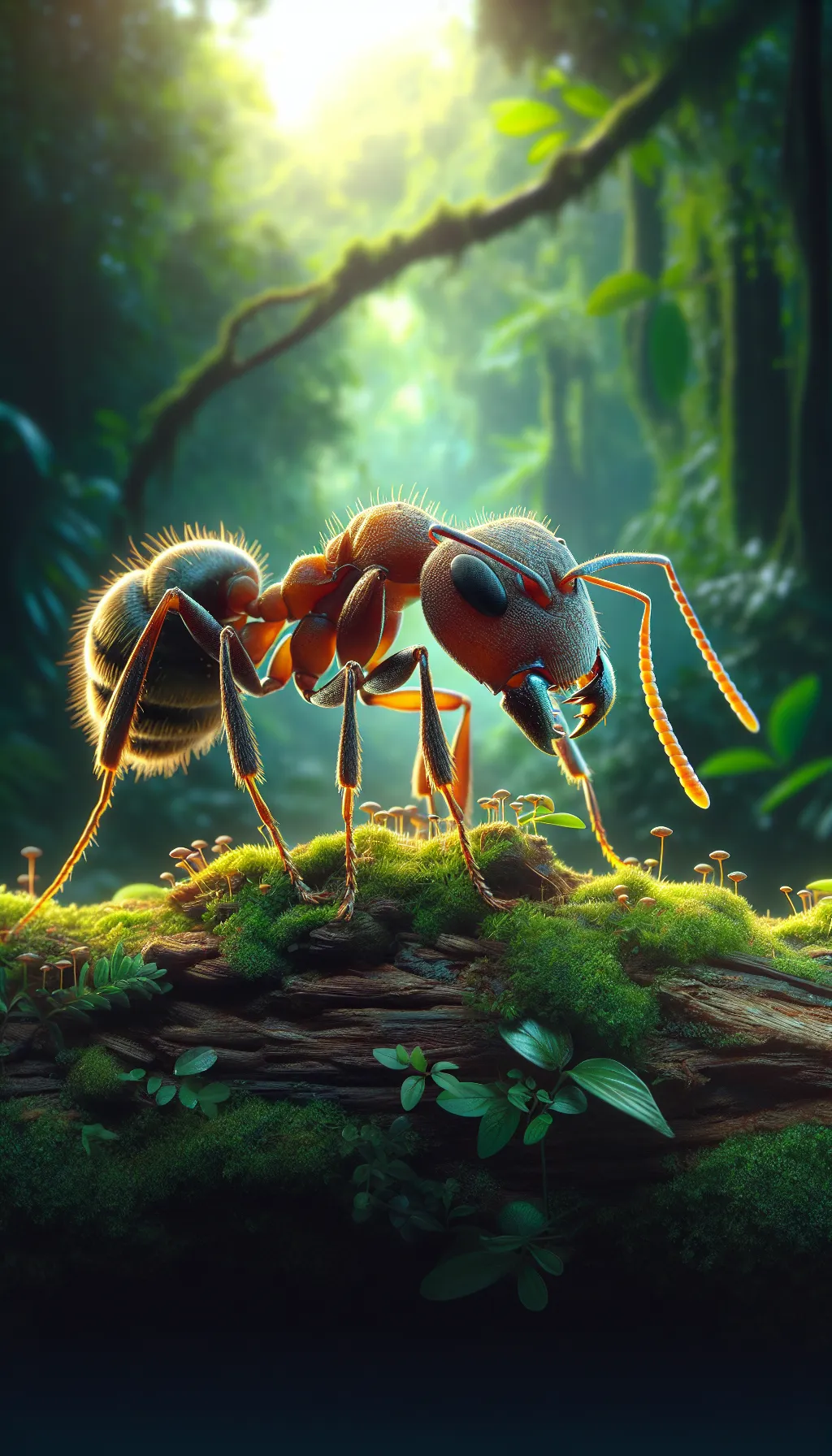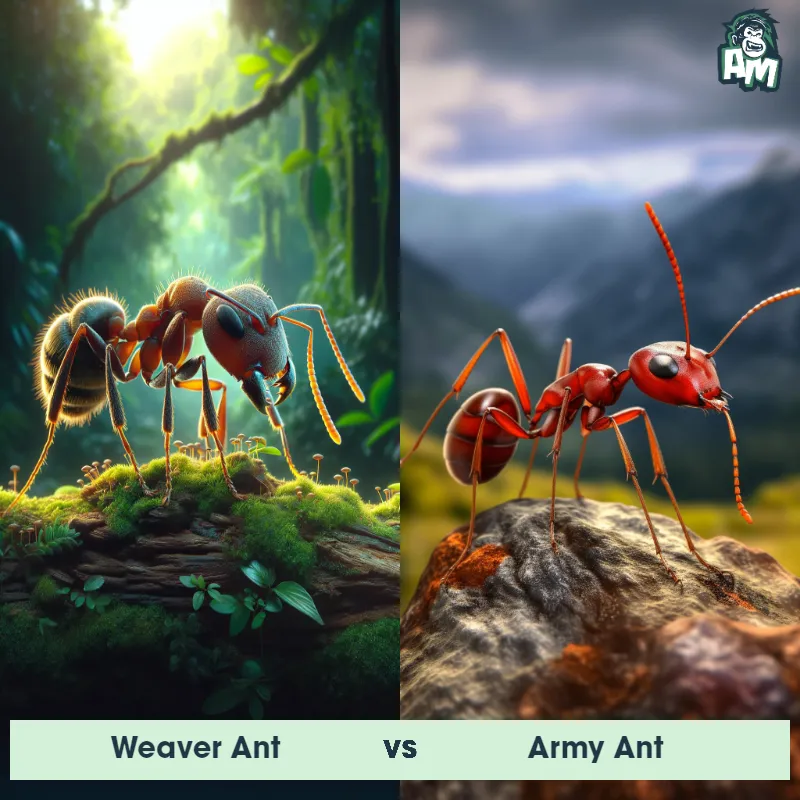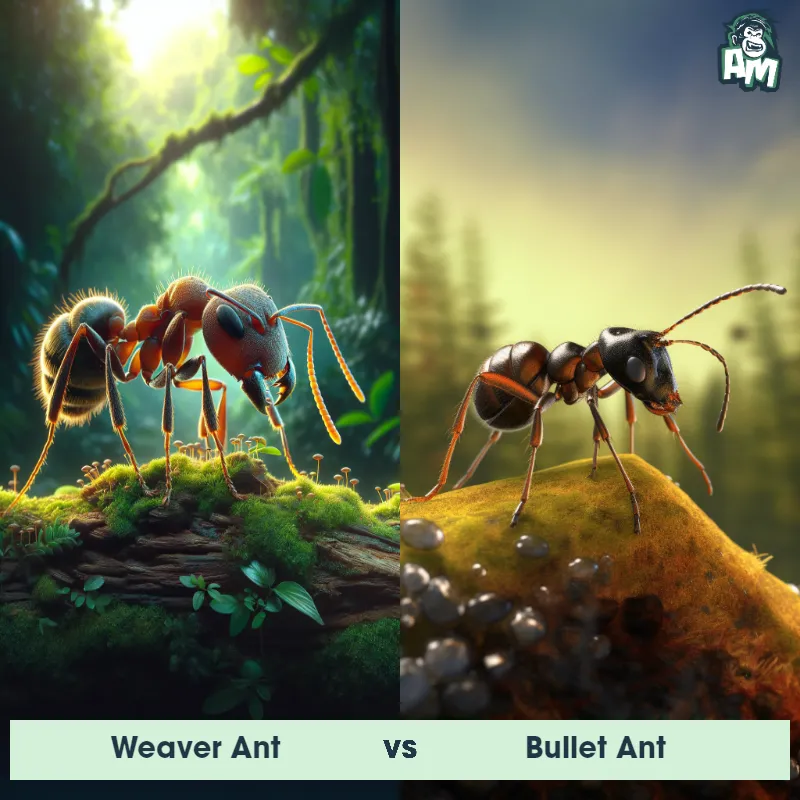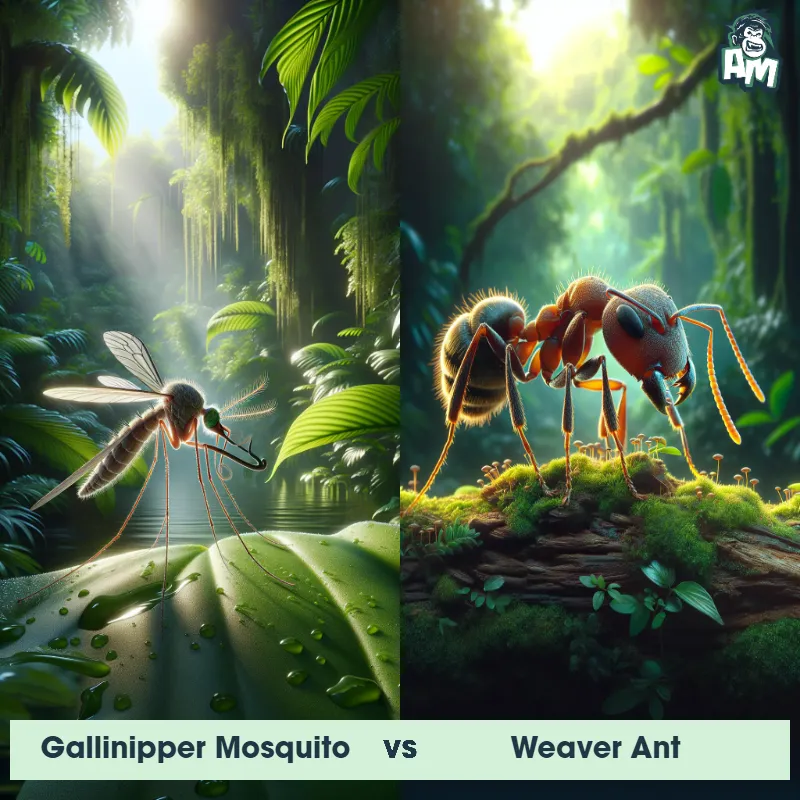The Weaver Ant
The Weaver Ant, also known as the Oecophylla smaragdina, is a species of ant found in tropical areas of Africa, Asia, and Australia. These ants are known for their remarkable ability to construct nests by weaving together leaves using silk produced by their larvae. Weaver ants are highly social insects, living in colonies that can range in size from a few hundred to millions of individuals. They are small in size, measuring around 5 to 10 millimeters long, with reddish-brown or black bodies. They have slender bodies, six legs, and well-developed jaws.

| Weaver Ant | |
|---|---|
| Size | 0.4 to 1 inch (1 to 2.5 cm) |
| Weight | Negligible |
| Speed | 0.03 mph (0.05 km/h) |
| Key Strength | Aggressive and skilled in group defense |
| Biggest Weakness | Fragile exoskeleton |
| Scientific Name | Oecophylla |
| Family | Formicidae |
| Habitat | Forests, canopies, and trees |
| Geography | Tropics worldwide |
| Diet | Omnivorous, feeds on nectar, insects, and plant matter |
| Lifespan | 2 months - 3 months |

The Weaver Ant
The Weaver Ant, also known as the Oecophylla smaragdina, is a species of ant found in tropical areas of Africa, Asia, and Australia. These ants are known for their remarkable ability to construct nests by weaving together leaves using silk produced by their larvae. Weaver ants are highly social insects, living in colonies that can range in size from a few hundred to millions of individuals. They are small in size, measuring around 5 to 10 millimeters long, with reddish-brown or black bodies. They have slender bodies, six legs, and well-developed jaws.
Fun Fact: Weaver ants are skilled and industrious architects, able to build intricate nests by sewing leaves together using silk produced by their larvae.
| Weaver Ant | |
|---|---|
| Size | 0.4 to 1 inch (1 to 2.5 cm) |
| Weight | Negligible |
| Speed | 0.03 mph (0.05 km/h) |
| Key Strength | Aggressive and skilled in group defense |
| Biggest Weakness | Fragile exoskeleton |
| Scientific Name | Oecophylla |
| Family | Formicidae |
| Habitat | Forests, canopies, and trees |
| Geography | Tropics worldwide |
| Diet | Omnivorous, feeds on nectar, insects, and plant matter |
| Lifespan | 2 months - 3 months |
Weaver Ant Matchups
We use AI to simulate matchups between the Weaver Ant and other animals. Our simulation considers size, strength, and natural predatory behaviors to determine the most likely outcome.

Can't find the Matchup you want?
Create Your Own MatchupWeaver Ant: Diet, Predators, Aggression, and Defensive Behaviors
What do Weaver Ants eat?
Weaver ants are primarily carnivorous, feeding on insects, small invertebrates, and honeydew secreted by aphids. They are also known to feed on nectar and other sugary substances.
Do Weaver Ants have any predators?
Weaver ants have several natural predators, including birds, lizards, spiders, other ants, and some mammals. These predators often target individual ants or raid the ant colonies for food.
Are Weaver Ants aggressive?
Weaver ants are known for their aggressive behavior, especially when defending their nests or foraging trails. They will attack intruders, other ant species, or even larger animals if threatened.
Do Weaver Ants engage in fights?
Weaver ants are territorial and will engage in fights with rival ant colonies to protect their territory. These battles can be intense, with ants using their strong mandibles and stingers to defend their nests.
How do Weaver Ants defend themselves?
Weaver ants have a unique defense mechanism where they form living chains to repel intruders or attackers. They will link their bodies together to create barriers on branches or leaves, making it difficult for predators to access their nests.
What is the biggest weakness of Weaver Ants in a fight?
Despite their aggression and defense strategies, Weaver ants have a vulnerability to chemical insecticides. These chemicals can be harmful to the ants, disrupting their communication, foraging activities, and overall colony health. Protecting their nests from chemical threats is crucial for the survival of Weaver ant colonies.
Fun Fact: Weaver ants have a mutually beneficial relationship with certain trees, such as the "Myrmecophyte" tree, where they build their nests. The tree provides shelter and sustenance to the ants while gaining protection from herbivorous insects.
Fun Fact: Weaver ants have a unique defense mechanism – they can spray formic acid from their abdomens when threatened. This acid spray can cause irritation and potential harm to potential predators, helping to ward off attacks.













